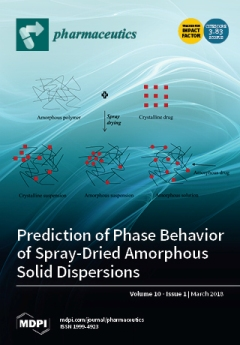The objective of this work is to evaluate the potential effect of cardiac stress exercise on the accumulation of [
123I]IAZA, a radiopharmaceutical used to image focal tissue hypoxia, in otherwise normal myocardium in healthy volunteers, and to determine the impact of exercise on [
123I]IAZA pharmacokinetics. The underlying goal is to establish a rational basis and a baseline for studies of focal myocardial hypoxia in cardiac patients using [
123I]IAZA. Three healthy male volunteers ran the ‘Bruce’ treadmill protocol, a clinically-accepted protocol designed to expose myocardial ischemia in patients. The ‘Bruce’ criterion heart rate is 85% of [220–age]. Approximately one minute before reaching this level, [
123I]IAZA (5.0 mCi/0.85 mg) was administered as a slow (1–3 min) single intravenous (i.v.) injection via an indwelling venous catheter. The volunteer continued running for an additional 1 min before being transferred to a gamma camera. Serum samples were collected from the arm contralateral to the administration site at pre-determined intervals from 1 min to 45 h post injection and were analyzed by radio HPLC. Pharmacokinetic (PK) parameters were derived for [
123I]IAZA and total radioactivity (total[
123I]) using compartmental and noncompartmental analyses. Whole-body planar scintigraphic images were acquired from 0.75 to 24 h after dosing. PK data and scintigraphic images were compared to previously published [
123I]IAZA data from healthy volunteers rest. Following exercise stress, both [
123I]IAZA and total[
123I] exhibited bi-exponential decline profiles, with rapid distribution phases [half-lives (t
1/2α) of 1.2 and 1.4 min, respectively], followed by slower elimination phases [t
1/2β of 195 and 290 min, respectively]. Total body clearance (CL
TB) and the steady state volume of distribution (V
ss) were 0.647 L/kg and 185 mL/min, respectively, for [
123I]IAZA and 0.785 L/kg and 135 mL/min, respectively, for total[
123I]. The t
1/2β, CL
TB and V
ss values were comparable to those reported previously for rested volunteers. The t
1/2α was approximately 4-fold shorter for [
123I]IAZA and approximately 3-fold shorter for total[
123I] under exercise relative to rested subjects. The heart region was visualized in early whole body scintigraphic images, but later images showed no accumulated radioactivity in this region, and no differences from images reported for rested volunteers were apparent. Minimal uptake of radiotracer in myocardium and skeletal muscle was consistent with uptake in non-stressed myocardium. Whole-body scintigrams for [
123I]IAZA in exercise-stressed healthy volunteers were indistinguishable from images of non-exercised volunteers. There was no evidence of hypoxia-dependent binding in exercised but otherwise healthy myocardium, supporting the conclusion that exercise stress at Bruce protocol intensity does not induce measurable myocardial hypoxia. Effects of exercise on PK parameters were minimal; specifically, the t
1/2α was shortened, reflecting increased cardiac output associated with exercise. It is concluded that because [
123I]IAZA was not metabolically bound in exercise-stressed myocardium, a stress test will not create elevated myocardial background that would mask regions of myocardial perfusion deficiency. [
123I]IAZA would therefore be suitable for the detection of viable, hypoxic myocardium in patients undergoing stress-test-based diagnosis.
Full article






